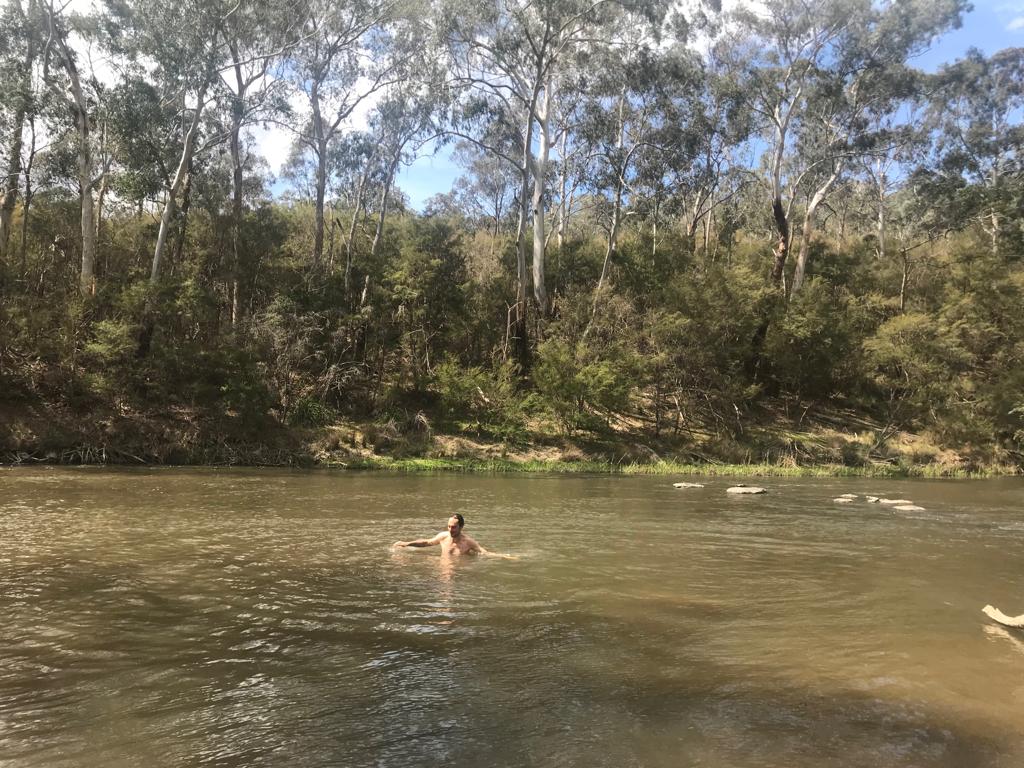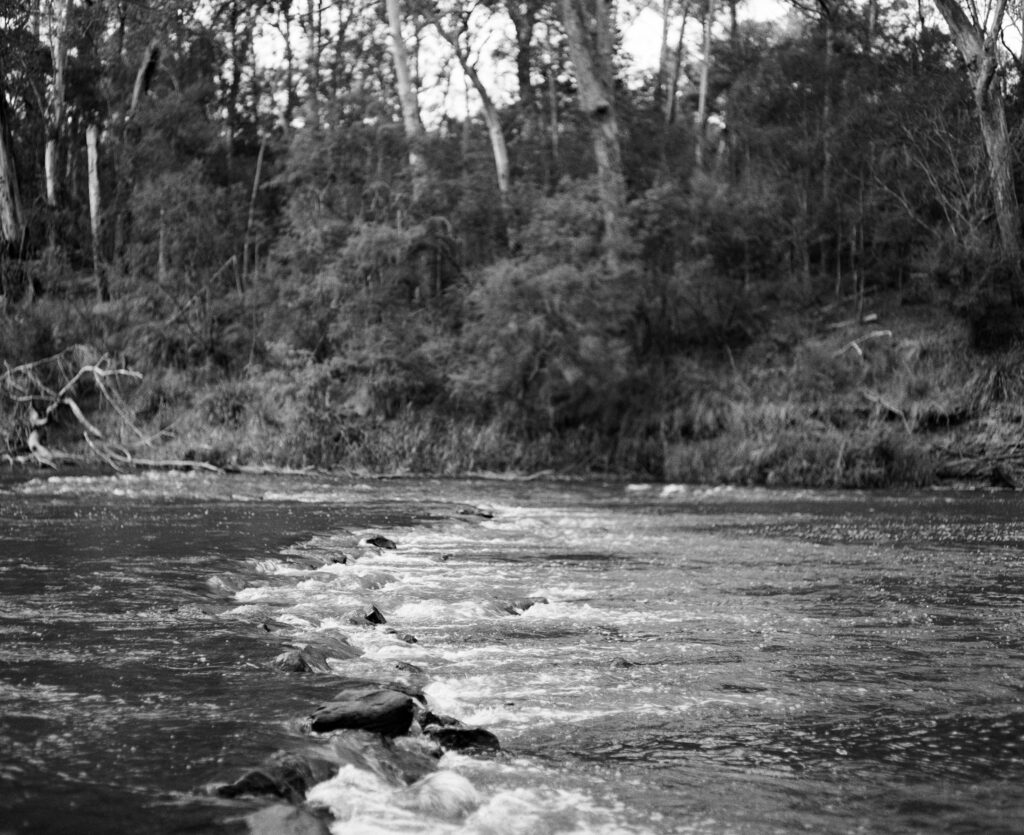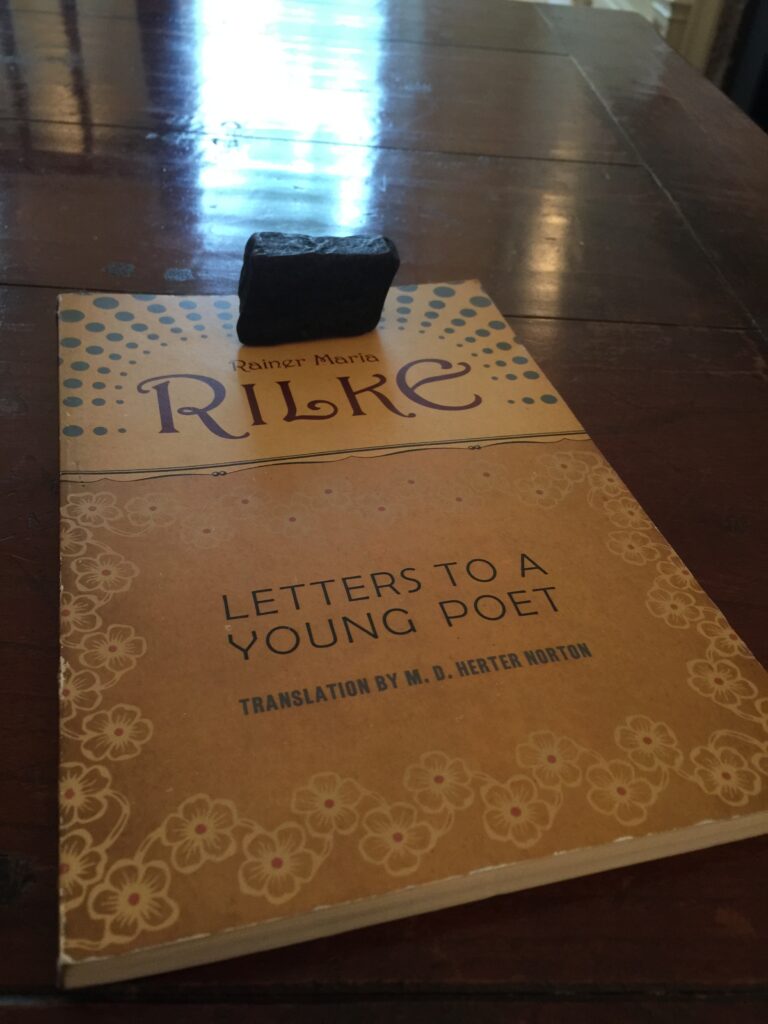This past month, when I open Instagram each morning, I am met with story after story focused on the situation in Israel and Palestine. I engage, reading the different perspectives, occasionally reposting one that resonates with my own, before I close the app and continue on with my day, a privilege of being a spectator of conflict. As time passes, and this stream of videos, photos and captions accumulate in my subconscious, my thoughts have repeatedly circled back to the concept of land, to Country, and my relationship with it.
I was born in Narrm, in East Melbourne, on Wurundjeri Country, in the south east of mainland Australia. 10 years ago, if you had asked me about my relationship with my birthplace, I would have told you I grew up in Eltham, and maybe described the eucalyptus trees endemic to that place, but I could not speak of a connection to that landscape, I hadn’t considered that possibility.
My awareness of the tangible relationship we form with land was precipitated by my return to Australia, after living in the UK for two and a half years. I had lived in Manchester for six months, and then London for more than two years, and these densely populated concrete environments had become a familiar, normal reality. Upon my return to Narrm (Melbourne), I was struck by the space, by the wide view of the sky on every street. When I returned to the landscape of my childhood, to Eltham, it was the first time I truly appreciated the rare beauty of my home: the trees, the plants, the River. Depending on traffic, Eltham is a mere 30 minute drive from the centre of Melbourne, and I was shocked I could access an abundant natural environment in the same amount of time it took to travel from Bethnal Green to Soho.
Over the next few weeks, I looked for somewhere to live. I would visit sharehouses and meet my potential housemates, explaining my life and how I decided to move back to Narrm to study playwriting. I would often speak of how refreshing it was to be back in Australia with its abundance of natural space. After a few weeks, I received a message from my childhood friend Josh, who had heard I was looking for somewhere to live.
“We have a room in Warrandyte.”
His parents had moved out of their house — a ten minute drive from my childhood home — and he and his brother decided to stay and convert the space into a sharehouse.
“We’d love you to move in.”
My girlfriend at the time was living in Northcote, close to the city, and I had been staying at her place a few nights each week, so the prospect of living away from the urban bustle, after so long in London, didn’t seem as daunting. But within weeks of moving in, we split, and I was suddenly immersed in my decision to live amongst the trees and memories of my youth.
It was May, the days had started to cool, signalling the coming winter, and on a Saturday morning I walked with my housemates to Birrarung, the Yarra River, which flows through the heart of Warrandyte. Swimming in the River was a strong memory from my childhood, and as we walked along the winding streets near our house, I tried to recall the last time I swam in its waters. When we reached Birrarung, I felt the cold water in the air, and I asked my housemate Kristian “it’s going to be freezing right?” He nodded.
“I’ll tell you a secret though, it’s best to swim in winter. In summer everyone swims, there are always people around, but in winter you’re the only one, and it feels like the River shares its secrets with you when it knows no-one else can listen.”
There was an energy in Kristian’s words that connected with me, and this feeling overcame my fear of submerging in the cold water. So I took off my clothes and hung them on the branch of a nearby tree and stepped into the River. It was colder than I expected, I thought to turn back, but I recalled Kristian’s words and they pushed me forward until the water reached my torso and I dove into the River’s brown depths. When I came up for air, I screamed out, reacting to the cold that had penetrated my body. I didn’t stay in for long, maybe 30 seconds, but I remember standing on the bank feeling warm even though the air surrounding me was only 12 degrees.

Despite swimming in Birrarung since my early teens, when I think of the beginning of our relationship, I think of this moment. For the next five months, I would visit the River three or four times each week, inspired by Kristian’s words, committed to understanding its secrets. Although this wasn’t a conscious thought at the time. I had experienced a lot of pain through my breakup with my girlfriend, and there was something in those cold swims that helped me heal. I can’t tell you exactly what it was, but the more I swam, the better I felt. It became a ritual, silent walks alone through the winter and eventually spring air, meeting couples walking their dogs, nodding as I passed, sometimes saying hello, and finally plunging into the cold Birrarung.
By October I got a job in the city. I decided to leave the trees and once again immerse myself in the urban hum, but I didn’t forget the River, and continued to visit it once or twice a fortnight. In summer, friends would join, and on New Year’s Eve, a group of us visited the same spot where I first connected with the River in April. It was a hot day, so once we were in Birrarung, we didn’t get out, and we sat amongst a part of the waters where rocks had accumulated. As we talked, I kept picking up the rocks, holding them for a minute or two before letting them go. Eventually I held a Rock that fit perfectly in the fist of my hand. It was shaped like a rectangular prism, and I held onto it for over an hour, until we decided to leave and drive back to the city where we were all attending a party. I went to drop the Rock in the waters as I stood up, but something in me said no. I closed my eyes to feel the Rock and I felt to take it with me. Having completed my studies in playwriting, I had decided to move to Europe, where my Dad lives, and feeling this Rock, I felt it was a way to continue my relationship with Birrarung.

The Rock remained with me for the next five months. When I felt anxious, I would put my hand into my pocket to hold the Rock, remembering that place and Birrarung, which brought me strength and clarity. The Rock went with me everywhere. When I slept, I would leave it on a table or floor next to me. After three months, I decided against creating a base in Europe, opting to travel to the Kimberley, in the north of Western Australia, accepting an invitation of a friend who was creating an event there.
Before leaving, I was in London, walking around Holland Park with my friend Lili. She had just moved to the UK from Sydney and was feeling unsettled, she was feeling a lot come up around a former relationship she left in Australia. Thinking of the same experiences in me — of my breakup in Australia and the swims in Birrarung — I thought of the Rock and offered it to her to hold as we walked. When we went to say goodbye, she didn’t want to let go of it.
“I feel so calm with this rock in my hand”.
She reluctantly placed it into my open palm. So I held the Rock, and closed my eyes, feeling whether to offer it to her so she too could maintain a connection to the Country of her birth. I felt the Rock tell me she could look after it but I had to make sure she brought it back, so it could return to the spot where I had taken it, the small rapids in Birrarung near Warrandyte. I explained to Lili the terms of the Rock, she looked at me with bewilderment, but then began to nod, appreciating I was serious.
“Okay, I will look after it and bring it back before the end of the year.”
We shook hands, embodying the agreement, and then parted ways.

I travelled to the Kimberley and within a day of arriving I was told the event was no longer happening. I was confused why I was there and tried to think of a new plan. I thought to message people I knew who had visited that part of Australia. I remembered one of the lecturers in my playwriting degree, Tom, had told me he directed a play with a community in the Kimberley, so I messaged him and he responded with excitement, telling me to find two Bunuba Elders he worked with. He offered one of their phone numbers, while the other he explained couldn’t be contacted.
“You need to go to Windjana Gorge, he will be there, it’s worth the trip.”
Later that day I went to Cable Beach in Broome, to swim in the calm waters of the Indian Ocean. After my swim I was standing on the beach, looking out at the ocean, wondering why I was there. A woman approached.
“Hello.”
I turned to respond, surprised by this stranger walking up to me.
“Sorry, I saw you looking out over the ocean for a while and felt like coming over. Are you okay?”
I told her I was, “thank you”, then smiled.
“I”m Petrine.”
Petrine had tanned skin and bright eyes. She stood solidly, like her bare feet were rooted into the sand below. The conversation between us started to flow. She asked why I was in the Kimberley. “If I’m honest, I don’t know.” Petrine asked if I knew anyone in the region? “Not really, but I was given two names a few hours ago by a former lecturer. I have one of their phone numbers, but the other one I have to go to Windjana Gorge to find.”
“Windjana Gorge? Are you talking about Dillon Andrews?”
I checked the name in the message from Tom.
“Yeah, that’s him.”
“I am going camping with him on Friday, do you want to come?”
During the five hour drive to Windjana Gorge two days later, Petrine explained more about the project with Dillon.
“Dillon, his niece Denise and I are meeting with five members of the Regional Services Reform Unit. We’re meeting to discuss a response – from Dillon and Denise’s community Biridu – to the Western Australian Government’s plan to close remote communities. Dillon and Denise felt it was important for any meeting to happen on Country, so the government representatives can literally feel the spirit of the land and witness Dillon and Denise’s connection to it. The plan is to visit three sacred sites of the Bunuba” – Dillon and Denise’s language group – “Tunnel Creek, Windjana Gorge and Carpenter’s Gap.”

The two days I shared with Dillon, Denise, Petrine and the representatives of the Government is its own story, too long to share here. These days deeply shifted my life along a new pathway I am still walking. The initial steps led me to Sydney, where I decided to live, and after a month of moving there, I received a call from Petrine asking me to help write the report we eventually submitted to the Government.
Throughout this time I kept thinking of the Rock, and at the end of the year Lili returned to Sydney to visit her family, and we met two days after her arrival and she returned the Rock to me. I kept it in my pocket and beside my bed, until I travelled to Narrm, to Melbourne, and to Warrandyte. It was my first journey back to Birrarung since I had left for Europe, and when I arrived to that sacred swimming spot, I took the Rock from my pocket and threw it back into the water, in the rapids where I had sat with my friends over a year earlier. I felt a tension release within my body, not realising the responsibility I had assumed when I removed the Rock from its home. I didn’t fully appreciate this at the time, I had just felt the energetic relief within my body, but it was upon meeting Thunghutti and Bundjalung man Warren Roberts, that I started to understand this story.
Warren and I had a mutual friend, Charlie, who told Warren about the report I wrote with the Bunuba. He wanted to meet me, so Charlie invited us both to his apartment for lunch, and I learned about YARN Australia, the organisation that Warren founded, which uses storytelling to create intentional relationships between the Original Sovereign Nations of Australia and people all over the world. Warren and I had an immediate connection, and from that day we started our walk together, in relationship, both focused on storytelling as a tool for understanding the many relationships we share in life. Like with the Bunuba, I began to document Warren’s ideas and visions through writing.

In one of the first few YARN workshops I collaborated with Warren, he shared a story he named “sticks and stones”, which recalls a day his Grandmother took him and his cousins to connect with a River close to his childhood home. The story explains how his Grandmother taught him not to remove stones from the Country he found them, how those stones have a connection to that Country, and it’s important to respect that relationship. In that workshop, Warren was explaining the practice of a Welcome to Country and an Acknowledgement of Country. A Welcome to Country is a ritual that has become common practice in public and private events held in Australia. This practice has also spread to Turtle Island, or North America, where a traditional custodian of the Country the event is taking place will welcome the attendees to the Country of their people. In Australia, for a welcome to be recognised as official, it must be performed by an Elder from the Original Peoples of that land. If an Elder or a traditional owner of that Country is unable to be present, an Acknowledgement of Country is offered, recognising the Country where the attendees are gathered and the Original Peoples of that place. During the workshop, Warren explained the intention that guides this practice.
“Connection to Country is about connecting to who you are. Let’s say you’ve got your grandmother’s Italian recipe, are you not going to acknowledge it, are you going to say it’s my recipe? Are you not going to acknowledge the people you are in relationship with, like when you lived in Melbourne and grew up with your family, are you not going to acknowledge them? Of course, every time you see them you are going to acknowledge them in some way. So we acknowledge our people and our connection to our Country, just like everyone else has the right to recognise where they come from, and that connection and that acknowledgement is based on their relationships. If you don’t want to acknowledge, does that mean you are not in relationship with the people and places you experience life?
“See back in the day, we would acknowledge each other through our ochre, through the ways we dressed, and because we don’t wear our ochre and our traditional things anymore, we have to acknowledge it in the open, so we know who is who, but traditionally we would know who we are through the way we spoke and the way we carved our instruments and our artefacts.
“Acknowledgement has always been in our culture. When you would travel from one Country to the next, you had to be welcomed, you couldn’t just walk across Country because you felt like it, you had to get permission to travel from here to there. Respect for Country is about respecting the people who were there before. For us, we’ve always been here, we haven’t left, so we all continue to acknowledge the people who came before us because they’re in the land. Our people are in Country, and all of the creation stories, all of the things that make us who we are, are in our Country.”
When the workshop finished we packed up the space and reflected on the proceedings of the day. Before we left, I shared this story with Warren, about the Rock from Birrarung, he just smiled and nodded.
“It’s an important lesson that one.”
Anton Rivette is a writer and photographer. He leads storytelling at eco-nnect.
You might also like: Protecting Our Home













